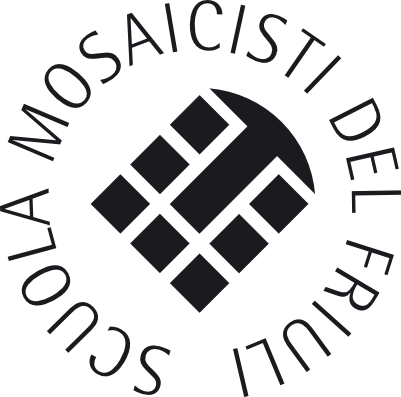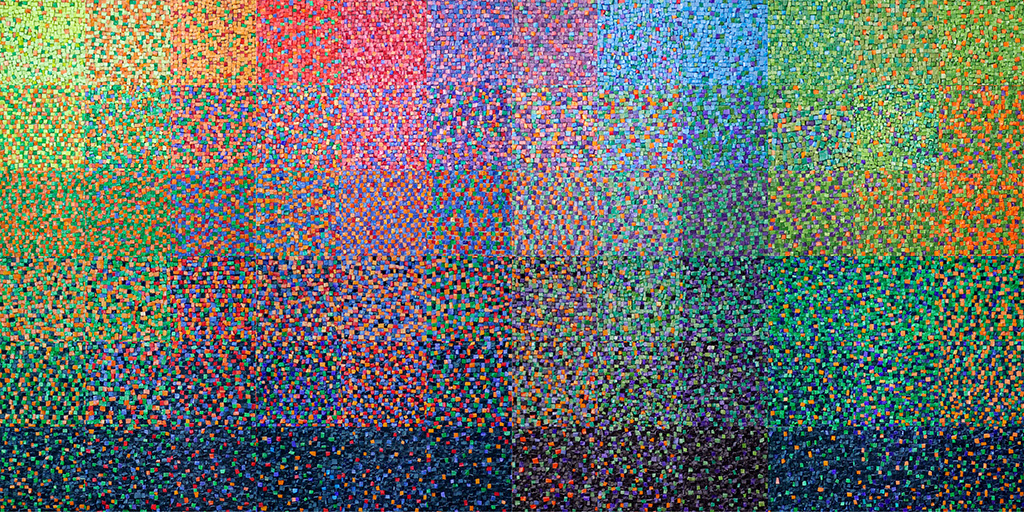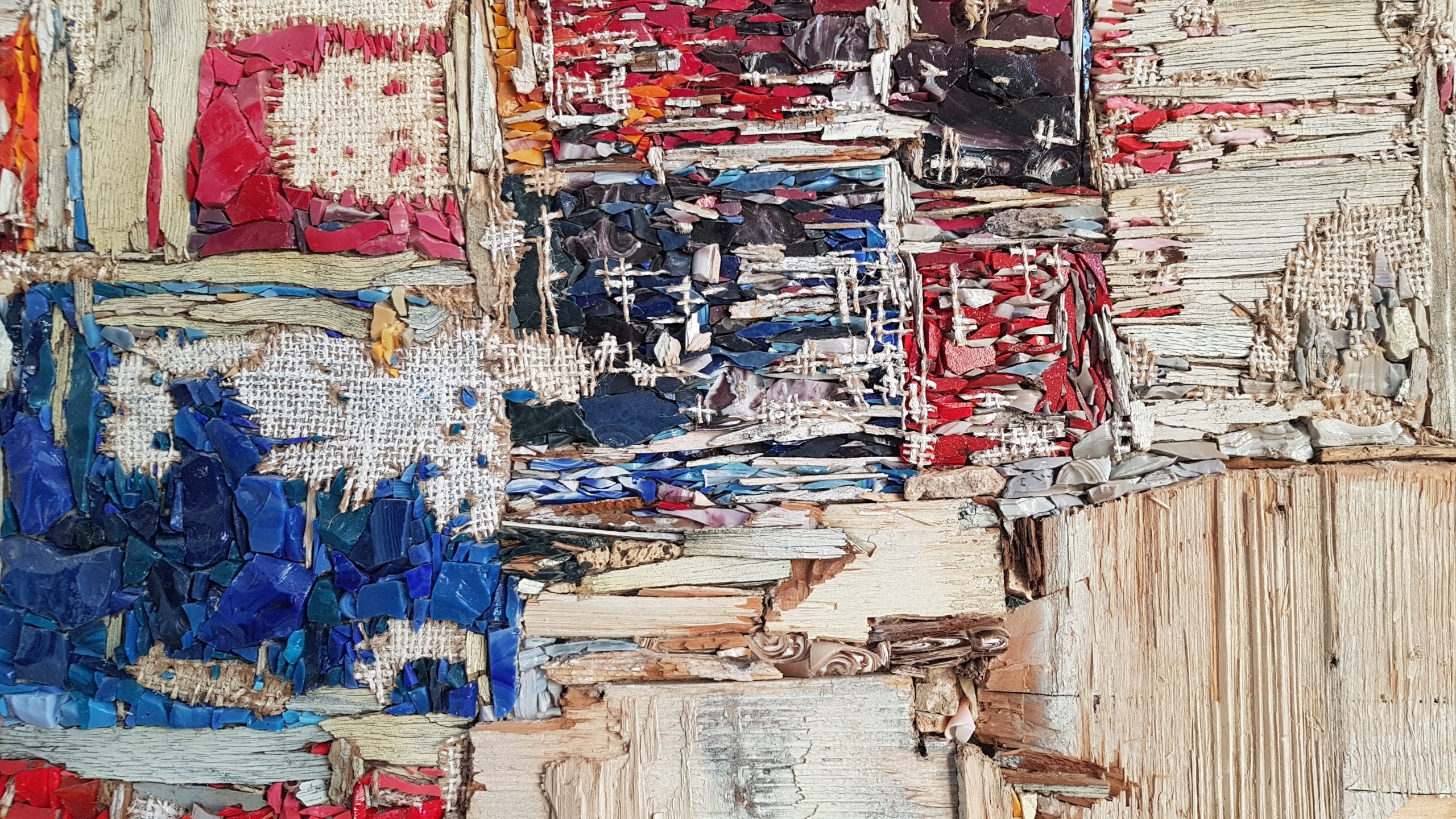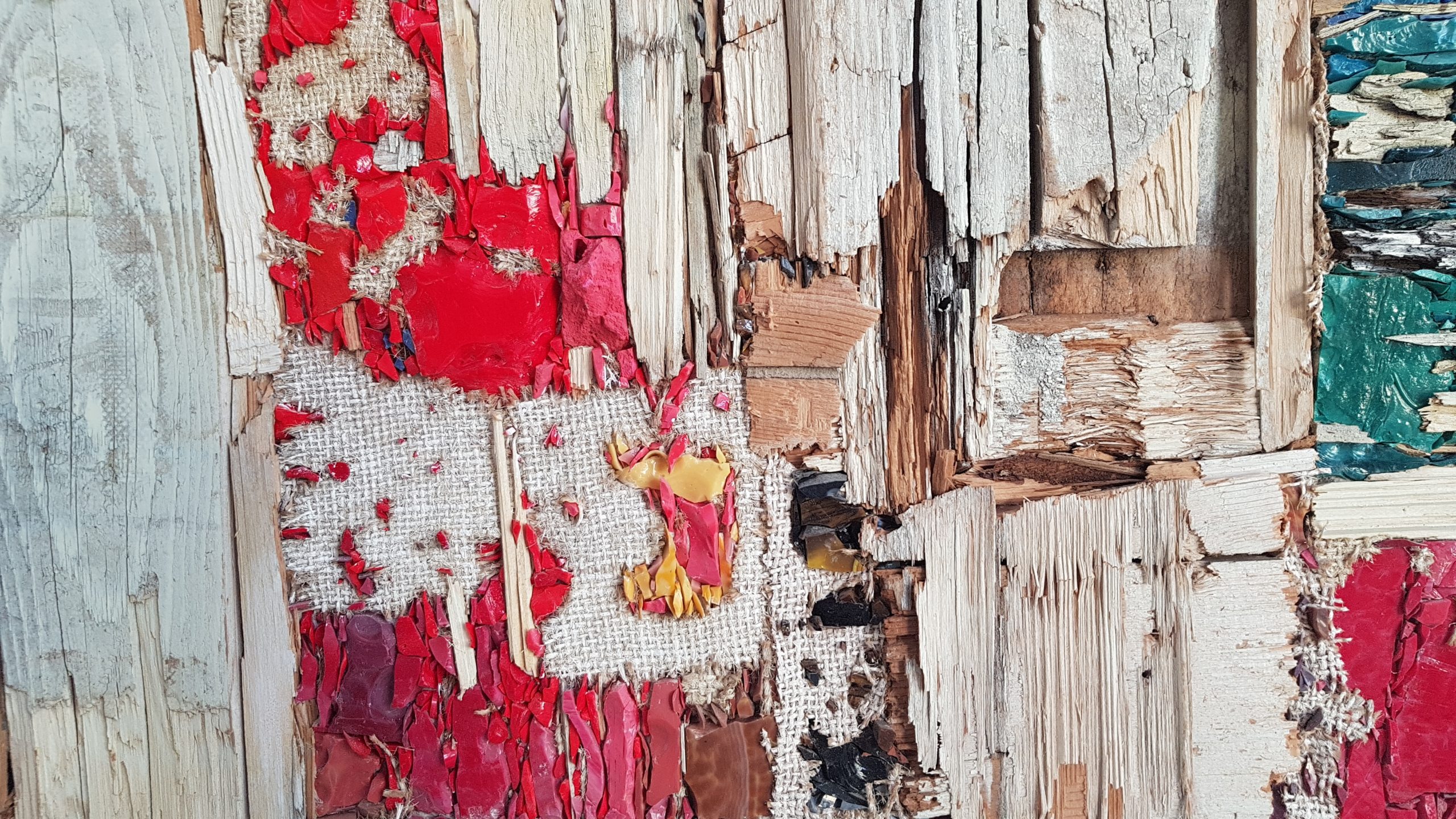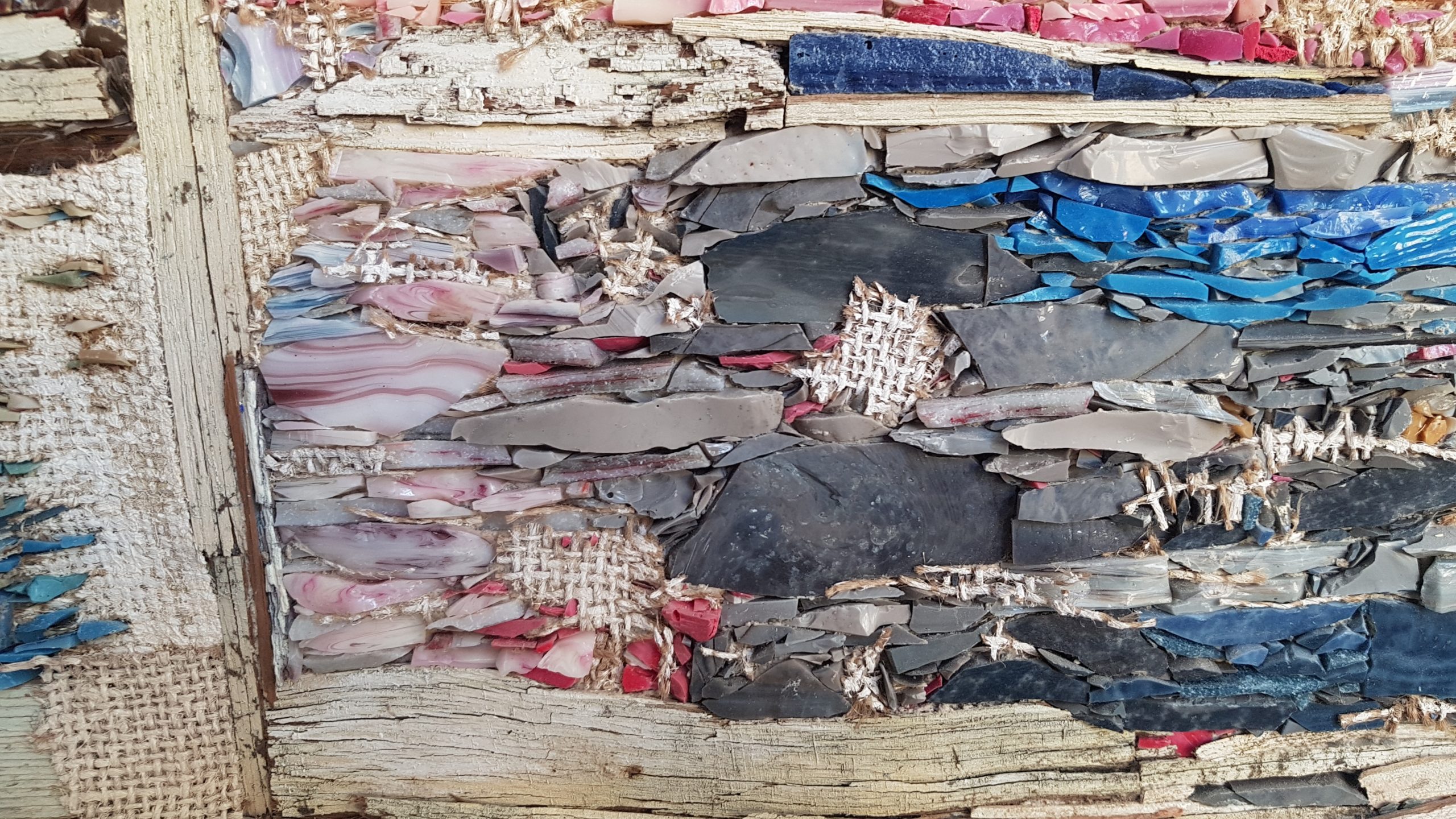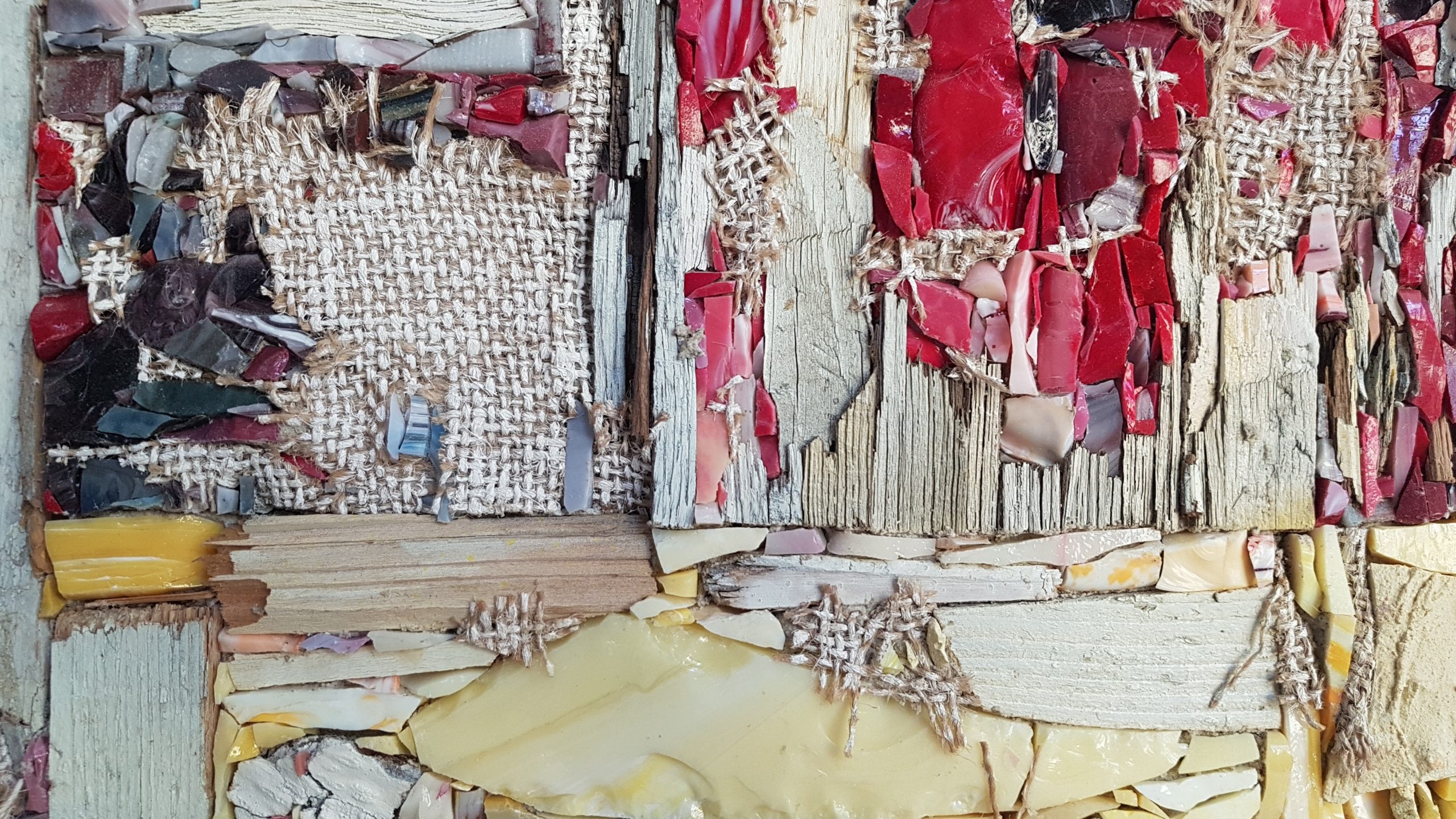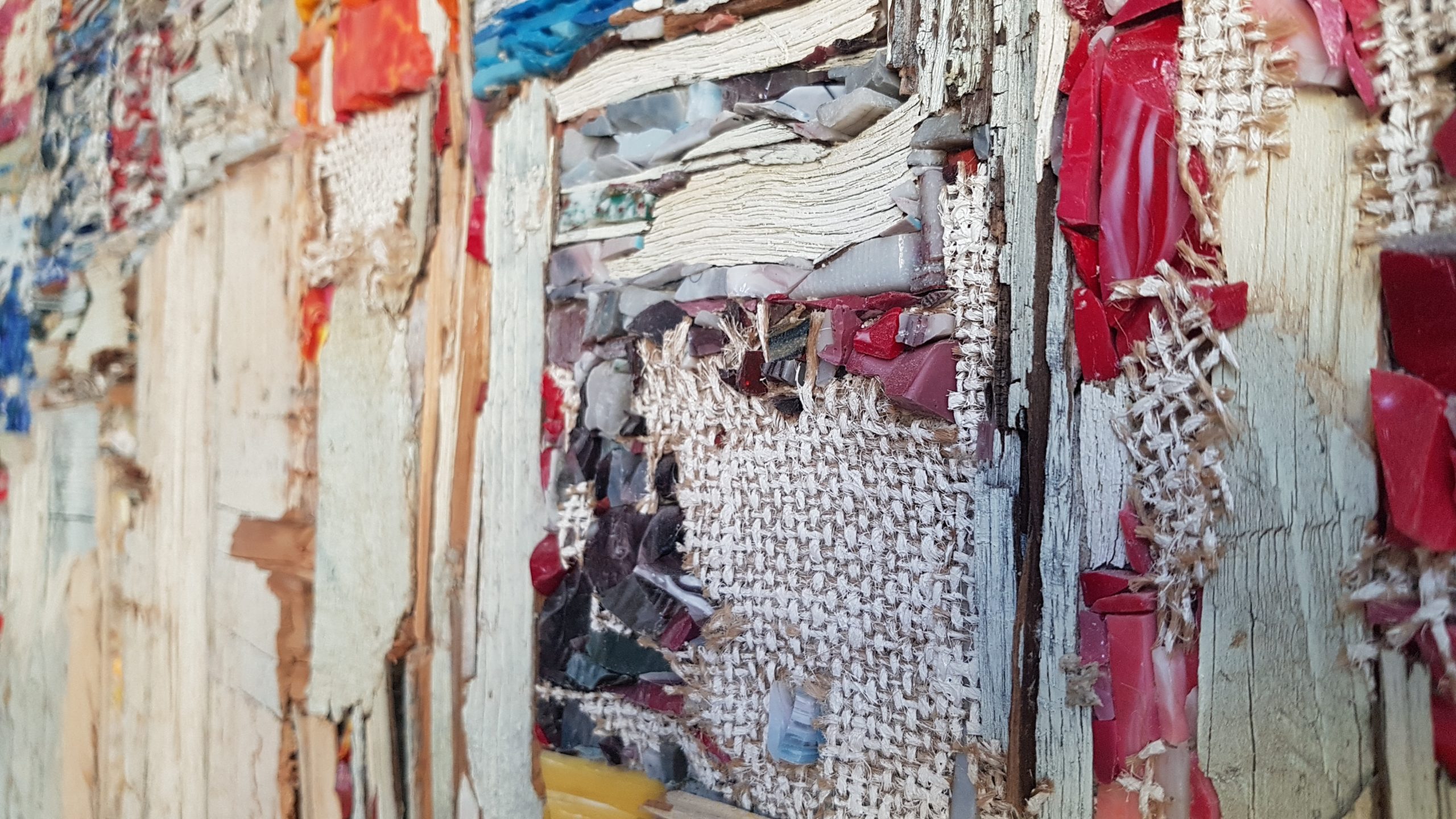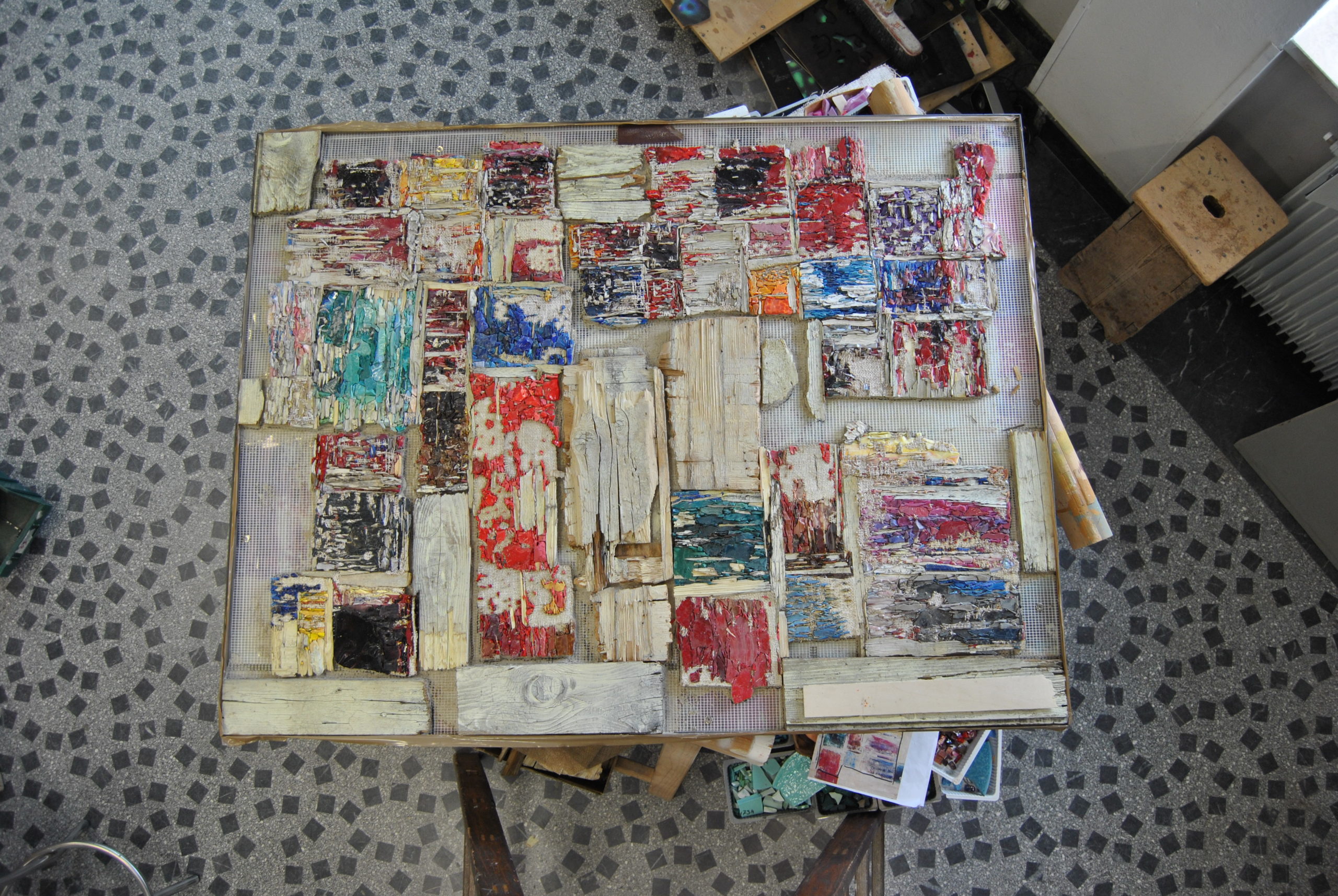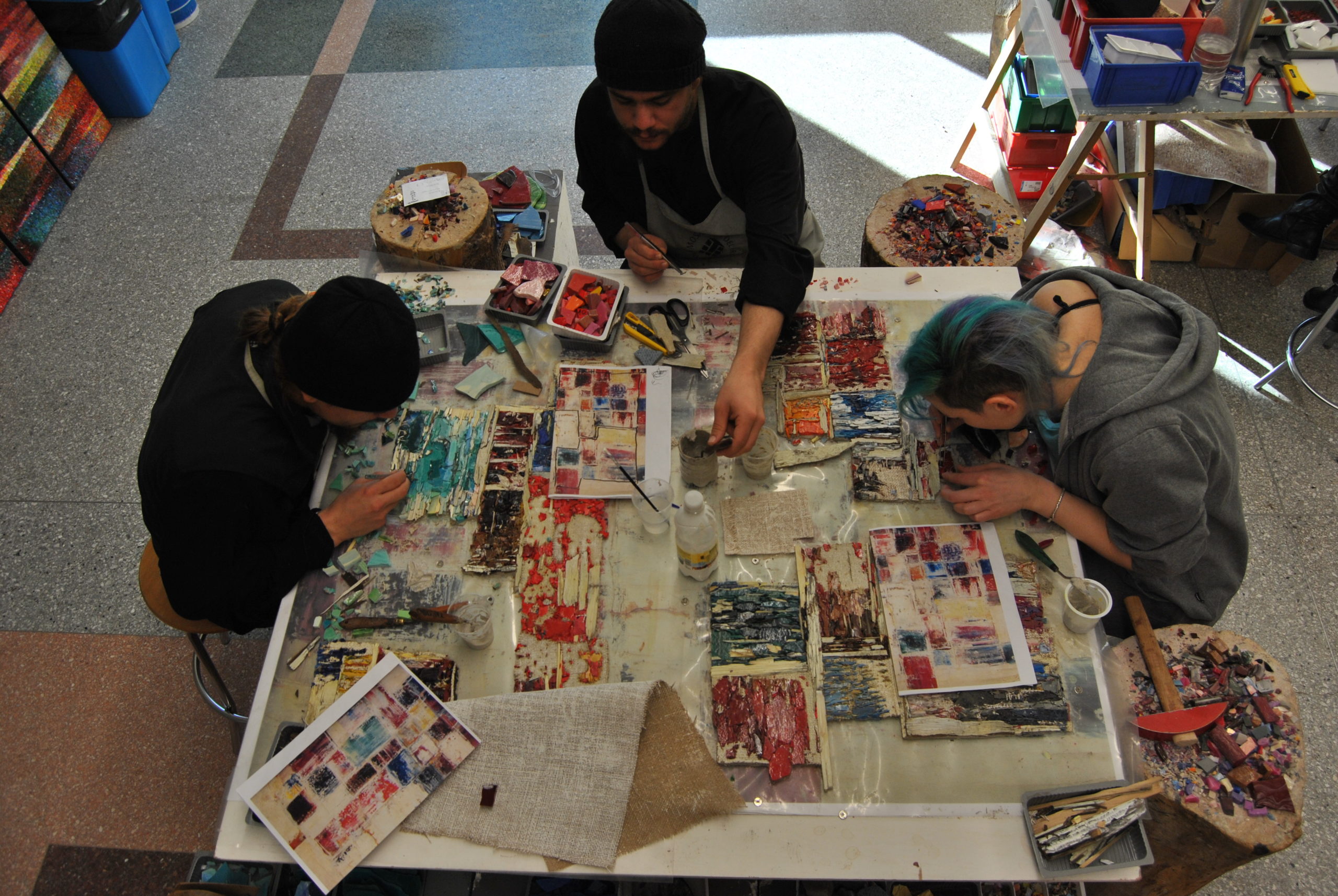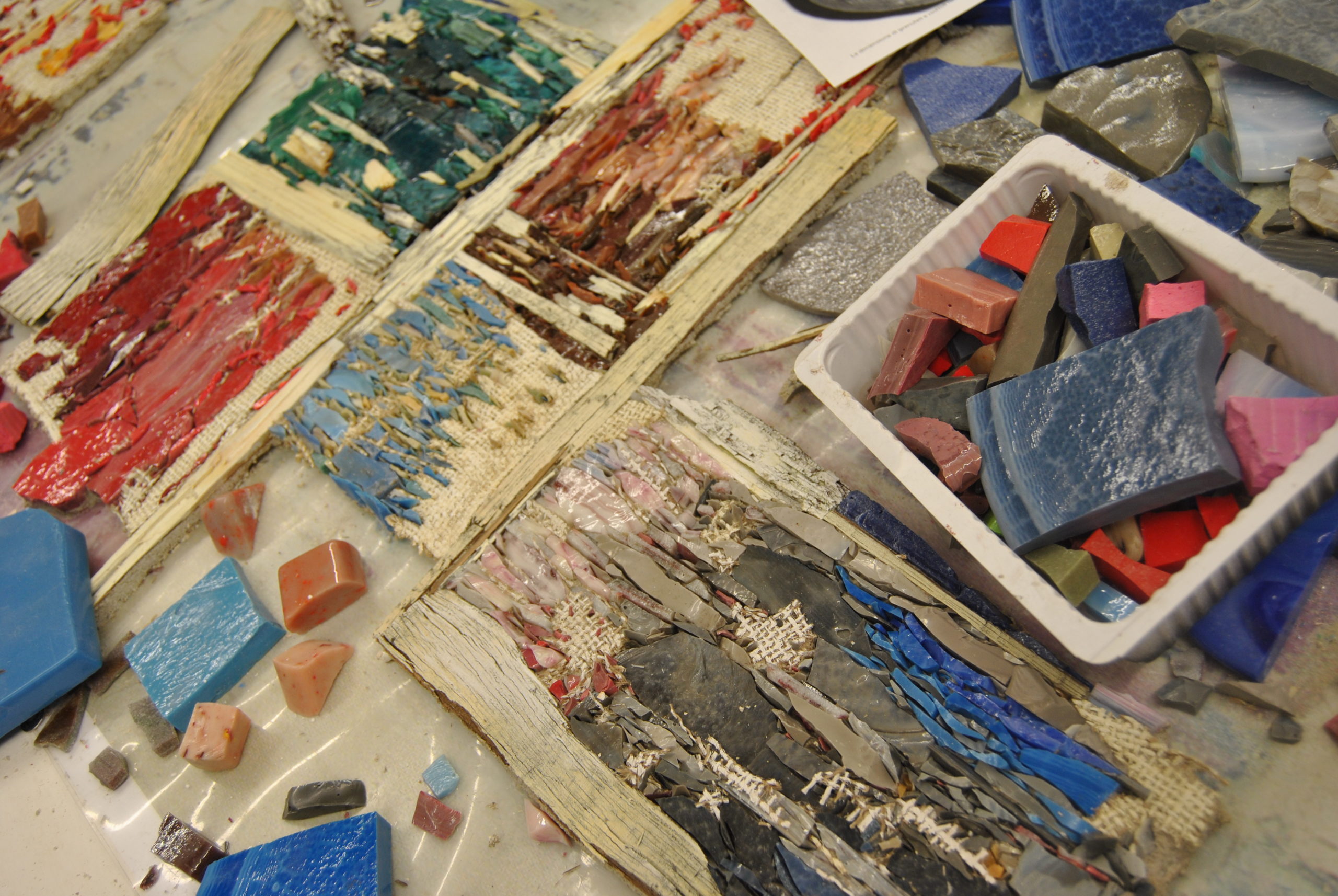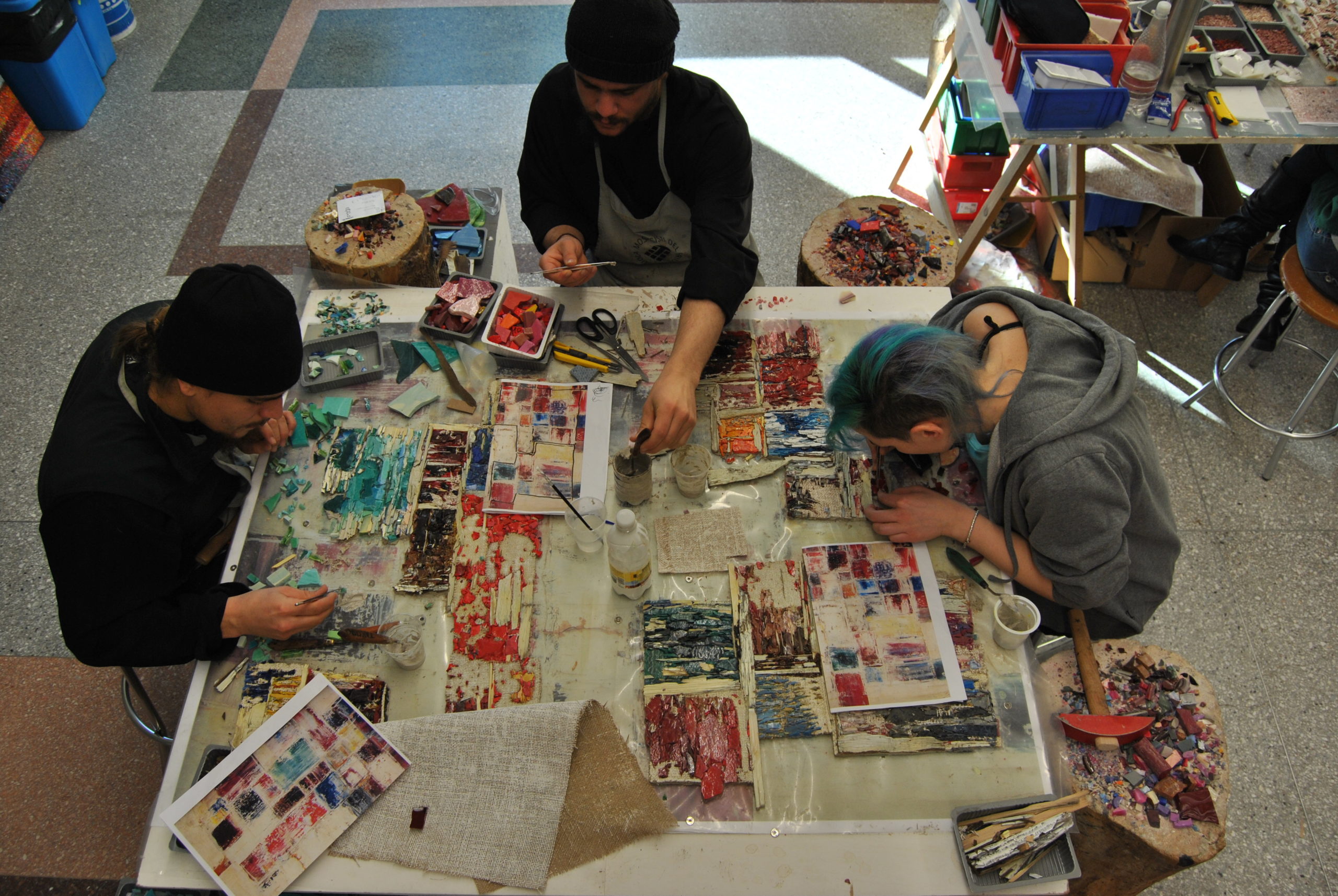Art-work's number: 2502
Support the School
This mosaic demonstrates how through the deep knowledge of mosaic technique it is possible to express maximum creative freedom. The unusual materials used could raise the doubt that the work cannot be considered a mosaic, yet if you look carefully you will see that in the composition the rules of the mosaic are respected and the same materials are treated as tesserae, minimal units that approached create a representation, in this case abstract.
In the third year, the creativity of the students is encouraged who try their hand at two-dimensional and three-dimensional forms and, through the teacher’s suggestions and ideas, seek their own language, a free technical-artistic expression. To the marbles and enamels, previously used in the training path, unpublished materials are added, taken from everyday life, manipulated and recontextualized, the avant-garde and abstract art of the twentieth century are studied, we think about sensorial perceptions both in the close vision of the mosaic, than in the remote one.
In 2014 it was decided to reflect on the art of Tancredi (Tancredi Parmeggiani, 1927-1964, one of the most sensitive and attentive painter of the 1950s). In his works structure and abstraction interpenetrate, moving signs that mark the rhythms of the composition. His painting, amazing for the variety of colors, motifs and techniques, has been translated into mosaic through particular care in choosing the materials and using the tiles. Tancredi focused on the point and the line as means to describe space, emotion, light; he investigated the movement, the rhythm, the repetition of signs, colors and shapes. . The challenge in transforming his painting into a mosaic was to convey the same depth, lightness, emotion and involvement through the combination of new materials in the field of mosaic, canceling its nature and weight thanks to the techniques of mosaic composition. In fact, if in painting lines, signs and colors are used to convey emotions, in the mosaic the material will be used, selected for its qualities, divided into tesserae-modules of various shapes, colors, thicknesses and luminous effects.
The beauty of the mosaic, compared to the paintings from which it took inspiration, lies in the double vision: from a distance, where the elements used blend, the surface reveals the movement and points of light are highlighted, and up close, where the texture is appreciated. and the structure, the technical expedients, the richness of the texture, the juxtaposition of colors, the width and arrangement of the joints.
The structure of the mosaic expands to infinity, it is rhythm and multiplicity, it knows no end to confirm that “art is freedom” as Tancredi professed.


